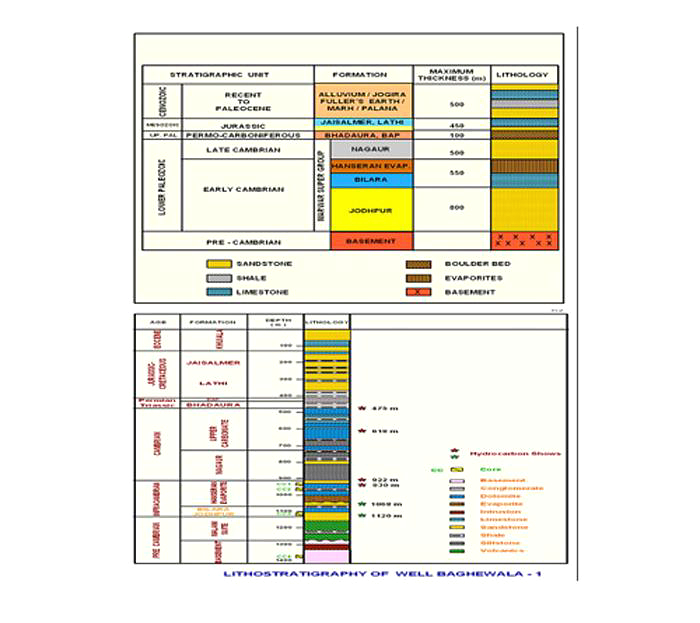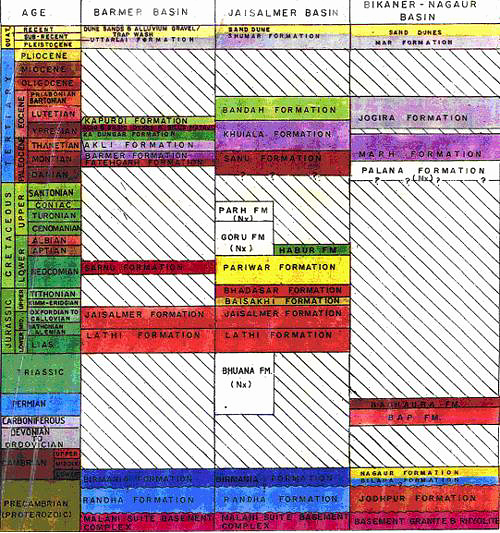Jodhpur Fm
Type Locality and Naming
OUTCROP: The type section is not designated. Typical exposures are seen in Pokaran, Aika and Sojat areas. [Original Publication: Shrivastava, B.P., and Srinivasan, S., 1962 : Geology of the area around Bap Nagaur, Western Rajasthan : Progress Report for the year 1961-61 ONGC report (Unpublished)]. Reference section: A nala cutting at two furlongs south-east of the village Kerawa and major portion of the area around Bap-Pokaran area, constitute reference sections.
[Figure 1: Location map of West Rajasthan Basins (after Pandey and Dave, 1998)]
Synonyms: Deopura and Shrivastava (1959) proposed this formation as Jodhpur Sandstone Group in Sojat-Khinwasar area. Later on Misra and Shrivastava (1960) named it as Phalodi Sandstone in Phalodi area. Subsequently, Shrivastava and Srinivasan (1962) designated it as Jodhpur Formation. Khanduri et al., (1972) followed the same nomenclature of Shrivastava and Srinivasan (1962) and distinguished two members in it viz., Basal Conglomerate and Sandstone Member.
Lithology and Thickness
Conglomerate, Sandstone. The formation is divisible into two members. The lower Conglomerate Member and an upper Sandstone Member. It consists of reddish, medium to fine grained compact sandstones with minor maroon to purple colored shale and clays. Basal part includes conglomerates of rhyolite pebbles and granite boulders. The sandstone acts as good reservoir rock. Due to scanty and patchy exposures the exact thickness of the formation could not be ascertained in the area. However, more than 200 m thickness of this formation is ascertained based on borehole/dugwell data.
[Figure 2: Generalized and Subsurface Stratigraphy of Bikaner-Nagaur Basin ((from dghindia.gov.in)]
Relationships and Distribution
Lower contact
The Conglomerate Member of Jodhpur Fm unconformably overlies igneous basement (Rhyolite igneous suite) around Pokaran.
Upper contact
In Pokaran area, north of Sankhlasar, the top of the formation is marked by occurrence of a 5 m thick conglomerate bed. However, this is not present in Phalodi area where it is represented only by gritty sandstone. This marks the unconformity between the Jodhpur Fm and the overlying Bilara Fm.
GeoJSON
Fossils
The formation is mainly unfossiliferous except Orthis, a brachiopod reported by Khan (1973).
Age
Depositional setting
Additional Information

